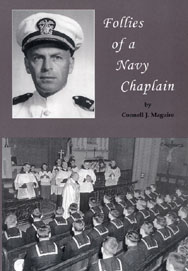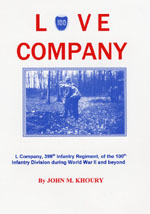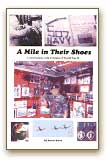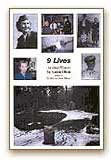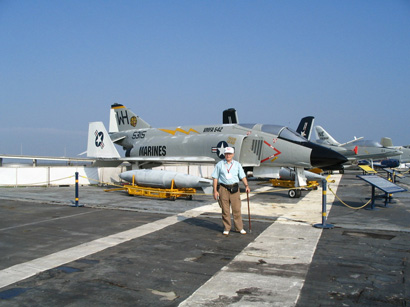©2005, 2009 Bruno Ehlich
Chapter 8
The Death March
(the following is the account of a survivor of the death march from Flossenburg)
By April 1945, the western Allies were pressing in on the Berlin area from the west and the Russians were advancing from the east. The Nazi leaders studied various means of liquidating the inmates of the concentration camps. But killing off hundreds of thousands of people and disposing of their bodies within a few days without leaving behind any trace of their heinous crimes proved to be too difficult for these fiendish men. So they decided to kill off the sick and march the rest to the nearest seaport where they would be loaded onto ships that would be taken out to sea and sunk, sending the prisoners to a watery grave.
From Sachsenhausen, we were due to march some 250 kilometers (155 miles) to Lubeck. Departure was scheduled for the night of April 20-21, 1945. The prisoners were first to be assembled by nationality. How thankful to Jehovah we were, therefore, when all Witness prisoners were ordered to assemble in the tailor shop! There were 230 of us, from six different countries. The Witnesses who were sick in the infirmary, occupants of which were to be killed before the evacuation, were saved by brothers at the risk of their lives and were carried to the tailor shop.
Indescribable confusion reigned among the other prisoners. Much stealing went on. As for us, we held an "assembly" and strengthened one another spiritually. Soon, however, our turn came to begin the long march, supposedly to a reassembly camp but actually to a planned watery death. The various nationalities left in groups of 600 prisoners -- first the Czechs, then the Poles and so forth -- some 26,000 in all. The group of Jehovah's Witnesses was the last to leave. The SS had given us a cart to haul. I learned later that it contained some of the loot the SS had plundered from among the prisoners. They knew Jehovah's Witnesses would take none of it.
That cart turned out to be a
blessing because sick and elderly ones were able to sit on top and
rest for a while during the march. When one got his strength back, he
would get down and walk and another Witness, too weak to follow, would
take his place and so on, through the two weeks that the "death march"
lasted. It was in every sense a "death march" because not only was our
destination to be a watery grave but death lurked along the way.
Anyone who could not keep up was mercilessly dispatched by an SS
bullet. Some 10,700 were to lose their lives that way before the
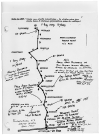 march
ended. Yet, through Christian love and solidarity, not one Witness was
left on the wayside to be killed by the SS.
march
ended. Yet, through Christian love and solidarity, not one Witness was
left on the wayside to be killed by the SS.
The first 50 kilometers (30 miles) were a nightmare. The Russians were so near that we could hear the guns. Our SS taskmasters were afraid of falling into the hands of the Soviets, so that first lap, from Sachsenhausen to Neuruppin, turned out to be a forced march that lasted 36 hours.
I had started out carrying a few meager belongings but upon getting more and more tired, I threw away one thing after another until nothing was left but a blanket in which to roll up at night. Most nights we slept outdoors, with just twigs and leaves to keep us from the damp ground. One night, however, I was able to sleep in a barn. Imagine my surprise to find a Vindication book (a Watchtower publication) hidden in the straw! The following morning our hosts gave us something to eat. But that was exceptional. After that, for days on end we had nothing to eat or drink except for a few plants we were able to obtain and use to make herb tea at night, when we stopped to sleep. I remember seeing some non-Witness prisoners rush over to the carcass of a horse that had been killed near the road and devour the flesh in spite of the blows of their SS guards who hit them with their rifle butts.
All this time, the Russians were advancing on one side and the Americans on the other. By April 25, the situation was so confused that our SS guards no longer knew where the Soviets or the U.S. troops were so they ordered the whole column of prisoners to camp in a wooded area for four days. While there, we ate nettles, roots and tree bark. This delay proved to be providential for had they kept us marching, we would have reached Lubeck before the German army collapsed and would have ended up at the bottom of Lubeck Bay.
The Last Night
On April 29, the SS decided to move the prisoners on toward Lubeck. They hoped to get us there before the Russian and American forces joined up. The march continued for several days and by that time we were approaching Schwerin, a city located some 50 kilometers from Lubeck. Once again the SS ordered us to hide in the woods. It turned out to be our last night in captivity. But what a night!
The Russians and the Americans were closing in on the remnants of the German forces and shells were whistling over our heads from both sides. An SS officer advised us to walk on unguarded to the American lines, about six kilometers away, but we were suspicious of this. We prayed to Jehovah for guidance and we finally decided to spend the night in the woods. We later learned that those prisoners who had accepted this officer's proposal and had tried to get through to the American lines had been shot down by the SS. About 1,000 of them died that night. How thankful we were for Jehovah's protection!
However, that last night in Crivitz Wood was anything but peaceful. As the fighting grew nearer, our SS guards got panicky. Some of them slipped away into the night while others hid their weapons and uniforms, donning the striped garb taken from dead prisoners. Those who were recognized were shot by prisoners who had found the weapons left behind. The confusion was indescribable! Men were running hither and thither and bullets and shells were flying everywhere. But we Witnesses kept together and weathered the storm under Jehovah's protecting hand, until the next morning. We expressed our gratitude to Jehovah in a Resolution adopted on May 3, 1945. We had marched some 200 kilometers in 12 days. Of the 26,000 prisoners who left the Sachsenhausen concentration camp on that "death march," barely more than 15,000 survived. Yet every last one of the 230 Witnesses who had left the camp came through that ordeal alive. What a wonderful deliverance!
On May 5, 1945, I made contact with the American forces and on May 21, I arrived back home in Harnes, northern France. I had survived the death march and certainly shared David's feelings, expressed in Psalm 23:4, "Even though I walk in the valley of deep shadow, I fear nothing bad, for you are with me; your rod and your staff are the things that comfort tme."
The death march from Sachsenhausen proved to be just one lap in the journey through the present system of things on toward the goal of life. Many have been my joys in sharing the "good news" since that time. Even as Jehovah has allowed me to survive that terrible march, my prayer is that, with my wife and three children, I will keep on walking on the narrow road of life, avoiding pitfalls to the right and to the left. Matt. 7:134, 14: Isa. 30:20,21.
(Here the death march survivor's story ends. From 11,000 emaciated prisoners who left KZ Flossenburg on the Death March south, 6,000 survived, thanks to the 90th Division, which evacuated hundreds to makeshift military hospitals.)

